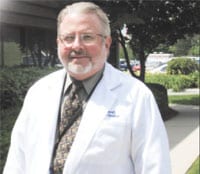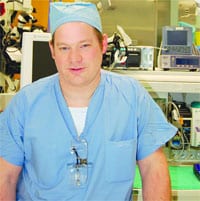Learning Experiences East Village Place Residents Say Watermark University Is a Class Act
Barbara Brown enjoys activities that are intellectually challenging.
The 99-year-old was a secretary at Farm Credit Adminstration in Springfield for 46 years and was very involved with business and professional clubs. She enjoys taking part in discussions about current events, participating in trivia sessions, and playing Scrabble.
She does these things at East Village Place in East Longmeadow, which offers its residents a wide range of courses through its Watermark University program. “The classes keep me thinking and interested in life,” she said. “You rot away otherwise, and this keeps me from going completely stale.”
East Village is one of a number of Watermark Communities across the country that have adopted the university program. Executive Director Pam Skiba said the facility introduced the new course offerings two years ago, and residents sign up for them during kickoff days held at the start of each semester.
“This quarter we offered 28 classes, and some people signed up for every one,” she said. The courses, which are taught by staff members, Springfield College professors, and other professionals, have fostered close-knit relationships as people share their thoughts, ideas, feelings, and memories, and are stimulated physically, mentally, emotionally, and spiritually.
“We developed this program to give residents the opportunity to learn and continue to grow,” Skiba said.
Some classes include homework, and rewards for completing it come in the form of so-called Buddy Bucks, which are used at monthly auctions. Activities Director Dee Chlebus said these auctions “are fun and get wild and crazy” as residents vie for items she purchases for the events. Philanthropy also comes into play, and for the past two years residents donated their bucks to Toys for Tots during the holiday season.
The university classes complement more-traditional activities, such as bingo, crafts, and exercise classes, and add a vital element that helps ensure that residents stay engaged, mentally stimulated, and connected with each other. “Research shows that, when people use their minds and challenge themselves to do new things, it can slow the progression of Alzheimer’s disease,” Skiba said.
Interactive Sessions
East Village Place has three levels of care. It offers assisted-living apartments and two memory-care units. One is for people in the early to middle stages of dementia or Alzheimer’s, while the other is a secure unit for people whose condition is more advanced.
East Village has always offered a full roster of daily actitivies, so when administrators decided to institute the Watermark University program, Chlebus found it challenging to develop a menu of classes that residents would find interesting and enjoyable. In fact, she weren’t sure how many people would even sign up for them.
But the program has been enormously successful and has led residents to take a proactive stance in creating their groups and activities. In addition, many employees have volunteered to teach classes in subjects they are knowledgeable about and enjoy. One example is a choir that has formed. The members have performed at the East Longmeadow Senior Center, Wingate at East Longmeadow, and East Village Place. “It was started by one of our maintenance men, a receptionist, and a certified nursing assistant,” said Skiba.
There is also a drama class that has staged performances. “I have seen many residents getting more actively involved here since we started the Watermark program,” said Skiba. “We have one resident who began running a bunco game, and another who runs a Friday-night bingo game. We want them to initiate activities. We believe that retirement isn’t about sitting back and letting things happen. It’s about getting involved and making things happen.”
Resident Betty O’Herron says the atmosphere at East Village Place has changed since Watermark University began. “They used to offer a lot of things, but it is so much better now. The classes are interesting, and you learn so much,” she said.
O’Herron loves attending sessions about current events and also enjoys a course titled “Armchair Travel.”
“We pick out a country and learn everything there is to know about it — how the people live, what they eat. Everyone is so friendly, and you really get to know the other people here. It’s very nice,” she said.
Connie Stockwell agrees. She recently gave 50 copies of a memoir she wrote in a creative-writing class to friends, family members, and fellow residents. Stockwell always enjoyed writing letters, but never dreamed she would commit her memories to paper. “I love the class. It opens up new vistas in expressing oneself. It also gives you a chance to get to know other people as they share their stories,” she said.
In fact, the entire focus of scheduled activities at East Village has changed since Watermark University was introduced. “In the past, we just entertained people. Now everything has turned into a class,” Skiba said, explaining that even entertainers gear their programs toward learning. For example, if a resident requests a song from a performer, he or she will only sing it if someone can name the person who recorded it. “It makes the residents dig into their minds and adds something to the programs,” Chlebus said.
Skiba agrees. “Mental stimulation is the goal, and our programs have become more social and interactive because people have to answer questions. As a result, they make connections and become engaged with other people who live here.”
Residents have formed a welcoming committee for new tenants, and a Sunshine Club sends cards and gift baskets to peers who are hospitalized.
One resident has a son who is stationed in Iraq, and when she used a Skype program to visit with him over the computer, other residents came into the room and waved. They also sent a care package to his platoon, filling it with items they purchased during their Friday trips to the grocery store.
Course topics run the gamut from famous people to crossword puzzles; there’s even a chef’s club. Skiba ran a men’s group, and many chose to use the time to talk about their spouses, sharing memories such as how and where they met. “They laughed and cried and shared their feelings,” said Skiba. “The men really connected with each other, and their relationships were different after the group ended. The more creative we get, the better.”
The residents love animals, and Skiba used to bring her dog, Buddy, for whom the Buddy Bucks were named, to East Village Place on a frequent basis before he died.
That prompted business office manager Liz Davila to bring in her canine, Cooper, and teach classes so residents could learn hand commands that the dog understands. More than 30 people signed up, including O’Herron. “I thought it was very interesting,” she said. “I had two dogs, but I never knew how to use sign language with them.”
East Village Place also hosts a monthly event that is open to the public and typically attracts 40 to 50 people. There have been country-and- western theme days, a Christmas ball with a two-piece band, a corned beef and cabbage dinner, and a summer barbeque. “We have people who come to every event because they feel a strong connection with us,” Skiba said.
Motivating Factor
Memory coordinator Annalee Munson said the program has resulted in tremendous change. “This used to be your typical assisted-living facility with activities such as games and bingo. But things are very different now, as managers and employees are sharing their interests with residents through programs such as scrapbooking or armchair travel,” she said.
Chlebus conducted a program about Hawaii and Ireland, during which residents learned about the cultures and made piña coladas. A few even donned grass skirts and shared experiences about their own trips there.
Topics in current events range from politics to pop culture, and quizzes at the end of each class make them doubly beneficial because residents pay more attention. “One woman who never wanted to take part in anything is now coming to brain trivia, current events, Scrabble, knitting class, and laughter sessions,” Munson said.
“This program,” Skiba added, “makes a tremendous differerence in people’s lives.”
Doris “Johnny” Messenger has been at East Village for 6 1/2 years, and says she is happier and healthier since the program was instituted. “I like trivia and things that make you use your brain,” she said, noting that she has taken part in creative-writing and photography classes, which included trips to allow students to put their new skills to use in different settings. She has a computer in her apartment and uses it to type pieces written by residents in the creative-writing class.
“I’m not artsy — I can’t make jewelry, but I do like things like this that make me think,” Messenger said. “And you have to keep busy; otherwise you will get bored and unhappy.”
The ultimate goal is to have residents thrive, Chlebus said. “We tell them nothing is impossible,” she said — at least, not when people are active, interested, and constantly learning.




Comments are closed.